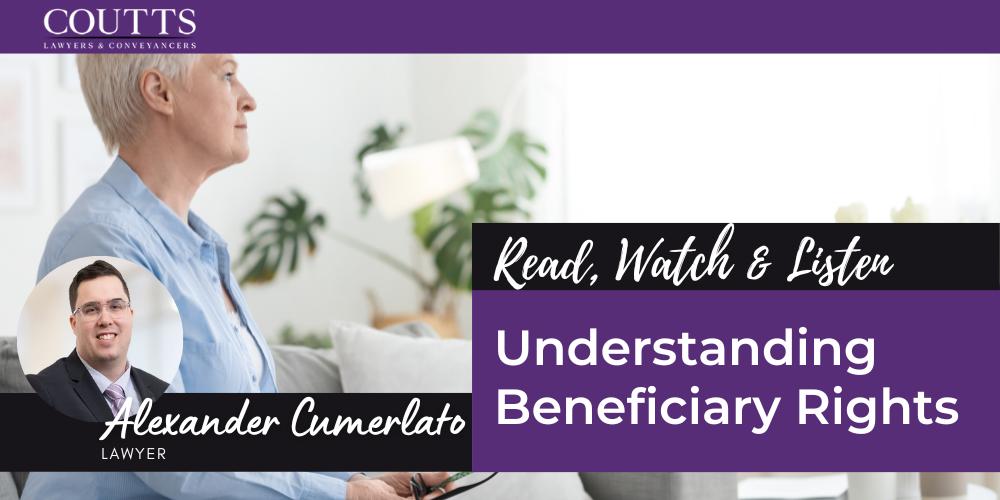When someone passes away, property ownership is generally the last thing on your mind. However, once you have had some time to process the loss, dealing with the property of the deceased person is extremely important. Understanding how the property is owned and what that means will determine how the legal title of the property is transferred and who it goes to.
Types of Property Ownership
In New South Wales, there are three ways that people can own property:
- Sole Ownership – When the Title of the property is held in the deceased person’s name only. No one has the automatic right to the property and the asset will be handled as part of the deceased person’s Estate.
- Joint Tenants – This is the most common way that married, or de facto couples own property. Whilst each person holds an individual interest in the property, when one person on the Title passes away the legal concept of “survivorship” takes place. That is, the interest of the deceased person will automatically pass to the other person listed as the joint tenant on the Title as that other person has “survived” the deceased person. In this case, the property does not form part of the deceased person’s Estate.
- Tenants in Common – This is when two or more people are co-owners of the same property. All of the people who own the property will be listed on the Title. The co-owners can all hold an equal share in the property (known as Tenants in Common in Equal Shares) or they can each own an unequal share, for example, 30/70 or 40/60. The co-ownership will depend on the arrangements made when the property was purchased. When a person on the Title of a property owned as Tenants in Common passes away, their individual interest or share in the property does not automatically pass to the other surviving owners. Instead, the deceased person’s share in the house will form part of their Estate and be distributed in accordance with what that person had nominated in their will, or if they did not leave a will, by the laws of intestacy.
So, how do I transfer the property?
As there are different ways that people can own property, it automatically follows that there are different ways to transfer the property into the new owner’s name. Property is transferred as follows:
Joint Tenants
Because the concept of survivorship applies to property that is owned this way, it is a much simpler process than the others. Even though the property automatically passes to the survivors, the surviving owner is still required to complete forms and provide certain documents to the land titles office to officially remove the deceased person’s name from the Title.
In New South Wales, the surviving owner will need to prepare and register a document called a “Notice of Death” and provide the land titles office with the original Certificate of Title so that they can remove the name of the deceased owner and return a new Certificate of Title to the surviving owner.
If there is a mortgage over the property, the mortgaging bank may hold the original Certificate of Title and the surviving owner will need to get their consent to register the Notice of Death.
Sole Ownership or Tenants in Common
As the right of survivorship does not apply to property owned by a person in their sole name or as Tenants in Common with other co-owners. Instead, the property forms part of the deceased person’s estate, and how the property is transferred will depend on whether the deceased person had a valid will.
Where there is a Will:
When a deceased person has left a valid will, there will be an executor appointed to handle the estate and transfer the property of the estate. However, the executor will need to apply for a Grant of Probate from the Supreme Court of New South Wales before they are legally permitted to transfer or sell the property. This can be a lengthy process and it always helps if the executor speaks to a legal professional so that they are able to meet the Court’s requirements.
Once Probate has been granted, the executor will be able to arrange for the property to be transferred into the names of the beneficiaries in the will or sold and the proceeds of sale divided between the beneficiaries of the will.
Where there is no Will:
In these situations, the deceased person is considered to have died intestate. Without a valid will, there is also no appointed executor. In New South Wales there is a predetermined hierarchy of people in the deceased persons family who will benefit from their estate. The person who has the greatest interest in the estate will then be required to make an application to the Supreme Court for a Grant of Letters of Administration and become the “Administrator” for the estate. Once the Letters of Administration has been granted, the Administrator has the legal authority to transfer or sell the property, however the beneficiaries of the property or the proceeds of sale of the property will depend on the rules of intestacy under the Succession Act (NSW) 2006.
The legal requirements and time frames for transferring property after someone has passed away can differ greatly. Speaking to a legal professional may help you to understand the process and handle the transfer of the property with as few issues as possible.
For further information contact:
Kaisha Gambell
Senior Lawyer
kaisha@couttslegal.com.au
02 4647 7447
This blog is merely general and non specific information on the subject matter and is not and should not be considered or relied on as legal advice. Coutts is not responsible for any cost, expense, loss or liability whatsoever in relation to this blog, including all or any reliance on this blog or use or application of this blog by you.



